What Are the Goals for Next Year?
The State of the District outlines the growth in our community and plans for future progress.
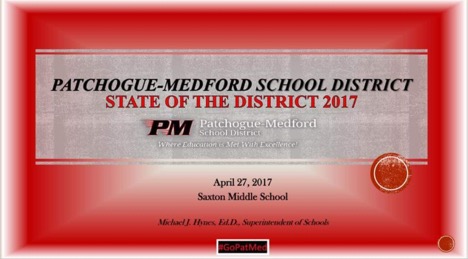
Photo by Louis Walker
Two weeks ago, Dr. Hynes held the annual State of the District presentation to the community to outline progress and future plans for our district.
On Thursday, April 27, 2017 in the auditorium of Saxton Middle School, Dr. Michael Hynes, superintendent of the Patchogue-Medford School District gave his annual “State of the District” address to discuss the accomplishments of the past school year as well as initiate the goals for the upcoming 2017-2018 school year with a fervent tone towards advancing the students and community. Over the past school year, the district has been encouraging the well-rounded development of students through play-based learning, instruction geared toward mindfulness to promote a healthy mental well-being, an increase in access to technology such as Ipads for K-2 classrooms, and high school media arts computer lab upgrades, as well as the expansion of the dual-language program. The major push by the district to enhance the learning process through encouraging divergent thinking has been motivated by Dr. Hynes; stating, “Recess is an extension of the classroom, not in lieu of.”
What is divergent thinking?
Simply put, divergent thinking is a thought process used to initiate creative ideas by exploring many possible solutions. For students, this would mean a way of determining an answer rather than simply repeating facts that have been learned in a classroom setting, by way of learning through experience. This thought process would encourage creativity, as well as adaptability, which are both essential in a productive learning environment, and serve as a major asset in the job market.
How would this way of thinking be conveyed to students, however? The method of interdisciplinary education, in other words the integration of two or more content area classes to highlight existing concepts, would promote the “brother/sister” relationships of subjects such as math and science, or history and English. Currently underway in the elementary school settings, this style of teaching would lay the foundation for divergent thinking, and is set to make headway in the high school; already established, one director heads the English and History departments, Gloria Sesso, Director of Secondary Humanities, 6-12 ELA and Social Studies, and David Klecher, Director of Secondary STEM (Math, Science, Technology and Business).
With this experience-based learning, taking place outside of a traditional classroom setting of standardized tests, growth of students would be measured as positive or negative changes, not simply meeting a benchmark grade. As Dr. Hynes stated, “If a student enters third grade with a first grade reading level, and leaves with a third grade reading level, they’ve improved, they grew by two grade levels. However, that would still be considered as lacking proficiency because they did not meet the fourth grade reading level by the end of the year, I don’t think that’s right.” For the upcoming school year, the proposed budget increase would be around 6.6 million dollars with 5.5 million going towards instructional programs for students.
How is the district going to promote divergent thinking?
To enhance the more hands-on approach to the learning process for the 2017-2018 school year, the district will continue to promote stability in student education with the percentage of students suffering from anxiety and depression having increased by more than 30% since 2004 according to John Hopkins Bloomberg School of Public Health. The grand motivation for the past and future changes introduced have has been the idea that physical growth, emotional growth, academic growth and social growth are all equally essential to the potential of individual students.
Therefore, the district has put in place fitness stations at Patchogue-Medford High School, Medford Elementary, Eagle Elementary and South Ocean Middle School to promote physical growth amongst the students and even community. Furthermore, the district has introduced programs to promote emotional growth such as yoga/meditation at the elementary schools and eventually all other schools. Social growth expands through the extension of recess by 20 minutes to preserve the children’s independence, as Dr. Hynes put it, “We can’t enable behavior to allow boys and girls to always look to adults”, promoting the idea of individual problem solving; and, of course, academic growth through divergent thinking.
The proposed budget for the 2017-2018 school year includes a $574,000 increase to student support services including counselors, nurses, psychologists, social workers, support staff, materials and supplies already having doubled the amount of counselors in the district over the past two years.
Moving towards being the model district.
The totality of progress that has been taking place in the Patchogue-Medford school district has not gone unnoticed. Just in this past year, representatives from the Commack, Brentwood, Sachem and South Huntington school districts, to name a few, have come to the Patchogue-Medford to have a better understanding of how the district is progressing in order to transfer the same to their own schools. The budget that has been created will be up for vote on Tuesday May 16, 2017 (if cancelled, a re-vote is scheduled for June 6, 2017) as well as the Board of Education elections. The budget will include the plan for the new programs to be instilled over the next year with an eye toward the future of the district and the students within.
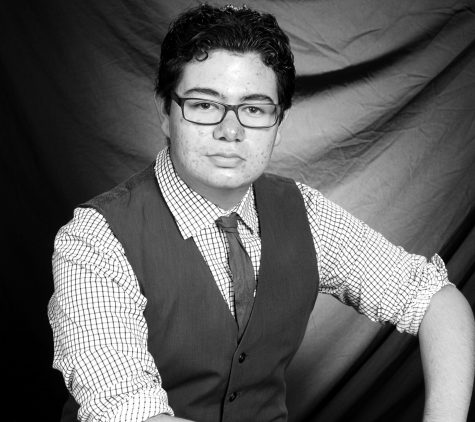
Grade 12
"Happiness lies in the joy of achievement and the thrill of creative effort"
F.D.R.

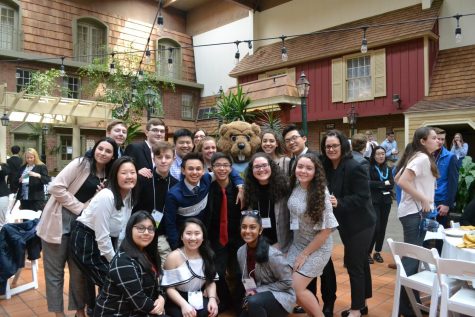
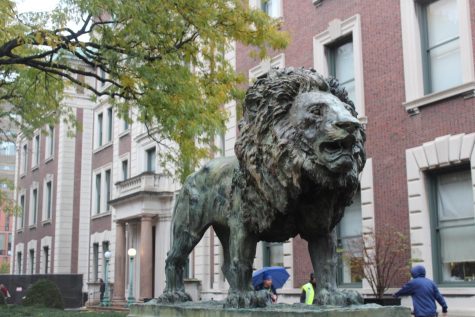
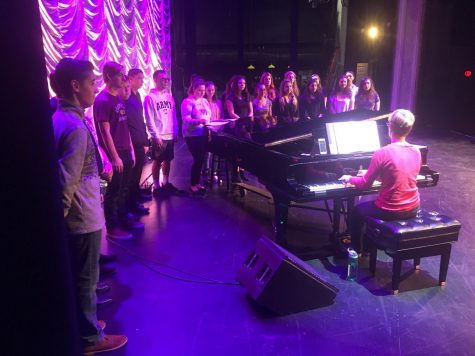
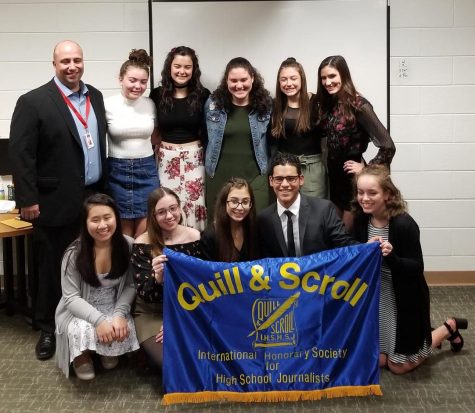

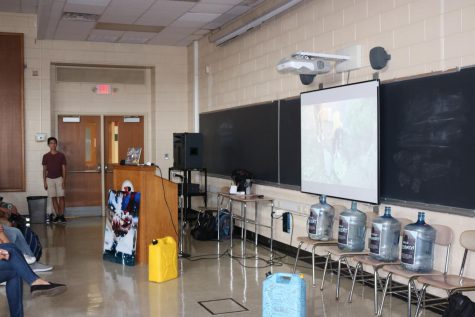




Mitzy • May 21, 2017 at 11:43 pm
I am glad to belong to patchogue Medford district. Because education matters, the administrators, and people who are in charge of making the students succeed, are also working on upgrading new programs to help us….
Michael Hynes • May 11, 2017 at 12:06 pm
Thank you for covering our State of the District. It is important for our community to know what direction we are moving toward. Well done.